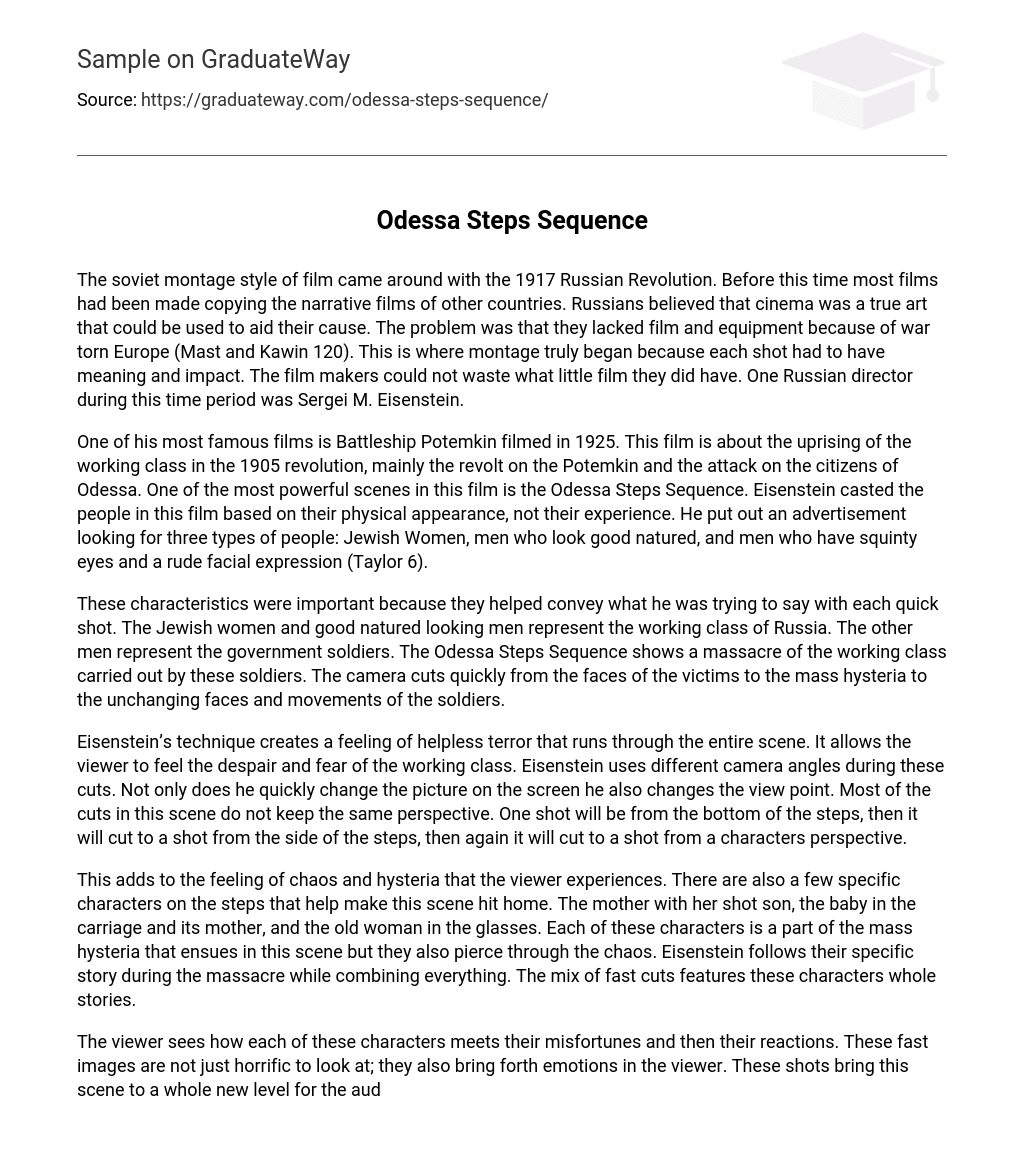The soviet montage style of film originated during the 1917 Russian Revolution, when Russians recognized cinema as a powerful art form for advancing their cause. Prior to this, films in Russia mostly imitated the narrative styles of other countries. However, due to the scarcity of film and equipment resulting from war-torn Europe, each shot in these films needed to be meaningful and impactful. One prominent Russian director during this period was Sergei M. Eisenstein.
In 1925, Sergei Eisenstein directed one of his most famous films titled Battleship Potemkin, which depicts the uprising of the working class during the 1905 revolution. The film specifically focuses on the rebellion aboard the Potemkin and the subsequent assault on the citizens of Odessa. One remarkable aspect of this film is the powerful Odessa Steps Sequence. Eisenstein chose the cast based on their physical appearance rather than their acting experience. He even placed an advertisement seeking three specific types of individuals: Jewish Women, kind-hearted looking men, and individuals with squinty eyes and a rude facial expression (Taylor 6).
These attributes were significant as they aided in conveying the intended message through each swift shot. The Jewish women and amiable-looking men symbolize Russia’s working class, while the other men depict government soldiers. The Odessa Steps Sequence portrays the slaughter of the working class by these soldiers. The camera swiftly switches from the victims’ faces to the widespread panic, then to the soldiers with their unchanged expressions and motions.
Eisenstein uses a technique that creates an intense feeling of terror, which is present throughout the entire scene. This technique effectively captures the desperation and fear felt by the working class. Eisenstein utilizes different camera angles in these edits, not only quickly transitioning between different images on the screen but also changing the viewpoint. Most of the cuts in this scene do not keep a consistent perspective. The shot may start from the bottom of the steps, then cut to a side view of the steps, and then transition again to a shot from the character’s point of view.
This scene generates a feeling of disorder and frenzy for the audience. Specifically, there are multiple characters on the steps who contribute to this sensation. These characters consist of a mother with her wounded son, a baby in a carriage accompanied by its mother, and an elderly woman wearing glasses. Even though they are part of the general state of hysteria, their individual tales shine amidst the pandemonium. Eisenstein adeptly melds their narratives with the rest of the scene through quick edits.
The audience witnesses the characters experiencing misfortunes and their subsequent reactions. These rapid images not only have a horrifying impact but also evoke emotions in viewers, elevating the scene for the audience. It serves as an exemplary demonstration of how the Soviets perfected their film technique during this era. Every shot in this scene holds profound meaning and emotion, devoid of any wasteful or superfluous elements. Each cut contributes to the increasing sense of hysteria that permeates the entire scene.
One of the ways in which Eisenstein achieved the emotions he desired from his audience was by using montage. By employing montage while following individual characters, Eisenstein was able to evoke the precise emotions he wanted to convey. This particular scene showcases Eisenstein’s mastery of montage and his ability to use it to his advantage.
Works Cited
Taylor, Richard. The Battleship Potemkin: The Film Companion. New York: I. B. Tauris, 2001. Print
Mast, Gerald, and Bruce Kawin. A Short History of the Movies. Pearson, 2012. Print





